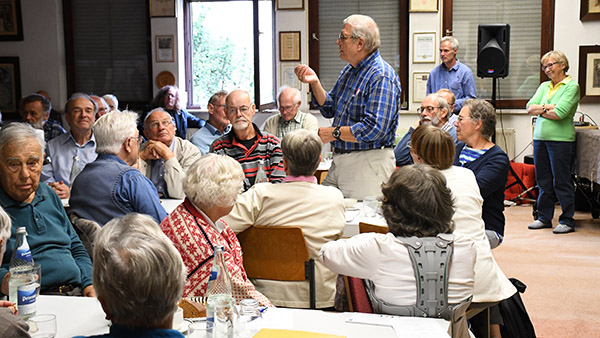The 20th conference of orchid experts in Kehl-Sundheim invited its participants to a long journey: The lectures had a broad range from the German regions of Odenwald and the upper valley of the Fils to Austria and Iran.

The trip report form Iran opened the conference: Jean-Marc Haas showed impressive pictures of orchids, tulips and Fritillaria. Markus Sonnberger from Heiligkreuzsteinach presented a botanical profile of the Odenwald. Among orchids, Himantoglossum hircinum and Epipactis helleborine are increasingly present, while other species are declining: Dactylorhiza fuchsii, Dactylorhiza majalis and Orchis mascula. In this region there are also growing Cephalanthera longifolia, Orchis militaris, Neottia ovata, Neotinea ustulata and Platanthera bifolia. Markus Sonnberger also showed botanical rarities of the region as Buxbaumia viridis or Stellaria neglecta.
H. Moeller showed impressive pictures of potential pollinators of Neottia ovata, among them wasps of different sizes. He observed them at short distance with his Lumix compact camera.
Norbert Griebl lectured about the “finest orchid regions of Austria” some albiflora forms as Gymnadenia conopsea in white and greenish, at the Golzentipp in the Gailtal Alps, or a white flowering Anacamptis coriophora in the valley of Lobau.
Prof. Hannes Paulus from Vienna presented the latest results of his research about the pseudo copulation of Ophrys species. He criticized a “unprecise use of the subspecies term in botany, that’s a big mess”. From his view it’s not correct to describe Ophrys illyrica und Ophrys tommasinii as subspecies of Ophrys sphegodes – “both have a different size and different pollinators, they are different species”.
Helmut Zelesny viewed white flowering forms of Orchis militaris, Gymnadenia conopsea and Neottia nidus-avis in the upper valley of the Fils near Unterboehringen as “freaks of nature, without scientific value”. But this does not explain why white flowering forms of some species and in some regions are more common than in other cases. Zelesny also showed the photo of a hybrid of a white flowering Orchis mascula and Orchis pallens.